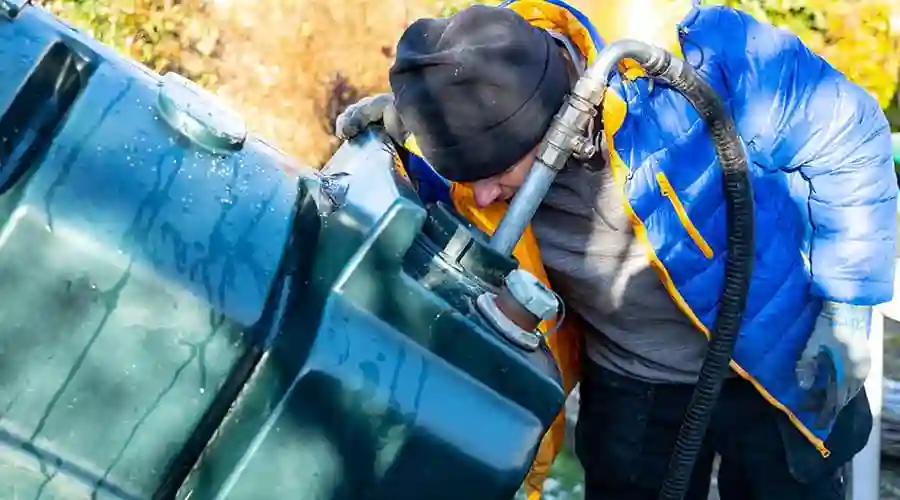Buried beneath the quiet landscapes of many homes lies a piece of infrastructure that, if not properly managed, can become a potential environmental and safety hazard – the residential oil tank. “From Burial to Removal” explores the intricacies of managing residential oil tanks, addressing the various stages involved in ensuring the safety, compliance, and environmental responsibility of these crucial systems.
1. Burial Basics: Understanding the Role of Residential Oil Tanks
Residential oil tanks play a vital role in providing heating fuel for homes. Typically buried underground, these tanks store heating oil that is used to fuel furnaces and boilers. Understanding the basics of their role is the first step in managing residential oil tanks effectively.
2. Assessment and Inspection: Uncovering the Hidden Risks
Managing residential oil tanks begins with a comprehensive assessment and regular inspections. Homeowners should routinely inspect tanks for signs of corrosion, leaks, or structural damage. Professional assessments can uncover hidden risks and provide insights into the tank’s overall condition, helping homeowners make informed decisions about maintenance or removal.
3. Navigating Regulatory Compliance: Meeting Local Standards
One of the critical aspects of managing residential oil tanks is navigating the regulatory landscape. Local and state regulations often dictate the proper installation, maintenance, and removal procedures for these tanks. Ensuring compliance with these standards is essential to avoid legal issues and contribute to a safe and environmentally responsible community.
4. Choosing Between Removal and Abandonment: Weighing the Options
Homeowners often face the decision of whether to remove or abandon their residential oil tanks. Removal involves extracting the tank entirely, while abandonment typically involves cleaning the tank, filling it with an inert material, and sealing it in place. Weighing the options requires considering factors like tank condition, environmental impact, and long-term property plans.
5. Monitoring for Signs of Deterioration: Proactive Maintenance
Proactive maintenance is a key component of effective tank management. Regularly monitoring for signs of deterioration, such as rust or corrosion, allows homeowners to address issues before they escalate. Timely repairs or upgrades can extend the lifespan of the tank and minimize potential hazards.
6. Environmental Impact Mitigation: Implementing Responsible Practices
Managing residential oil tanks responsibly involves mitigating their environmental impact. This includes preventing leaks, spills, and soil contamination. Implementing responsible practices during installation, maintenance, and eventual removal contributes to minimizing the environmental footprint of these systems.
7. Timely Upgrades: Transitioning to Modern Alternatives
As residential oil tanks age, considering timely upgrades becomes essential. Homeowners can transition to modern and more environmentally friendly alternatives such as natural gas, electric, or solar heating systems. This not only improves the efficiency of the home’s heating but also aligns with sustainability goals.
8. Documenting Maintenance and Removal: A Paper Trail for Accountability
Maintaining a thorough documentation trail is crucial in managing residential oil tanks. Documented records of inspections, maintenance activities, and eventual removal provide a clear picture of the tank’s history. This documentation not only helps homeowners track the tank’s condition but also serves as evidence of compliance with regulatory standards during property transactions.
9. Safe Decommissioning: The Removal Process Unveiled
For homeowners opting for removal, the decommissioning process involves a series of steps. From draining the tank and cleaning its interior to excavation and safe disposal, each phase must be carefully executed. Engaging certified professionals ensures the safe and compliant removal of residential oil tanks.
10. Community Education: Promoting Awareness
Managing residential oil tanks goes beyond individual properties; it involves community education. Homeowners can contribute to community awareness by sharing knowledge about responsible tank management practices. Educating neighbors about the potential risks, regulatory requirements, and available alternatives fosters a collective commitment to safety and environmental responsibility.
Conclusion:
From burial to removal, managing residential oil tanks requires a comprehensive and proactive approach. By understanding the basics, navigating regulatory compliance, choosing between removal and abandonment, and implementing responsible practices, homeowners can ensure the safety, longevity, and environmental responsibility of their oil tank systems. Through community education and a commitment to timely upgrades, homeowners contribute to a collective effort to manage residential oil tanks responsibly, ensuring a safer and more sustainable living environment for all.














